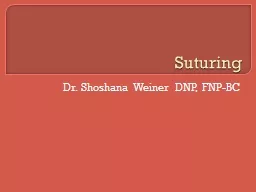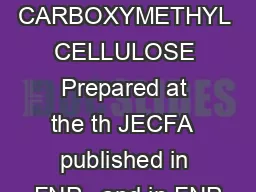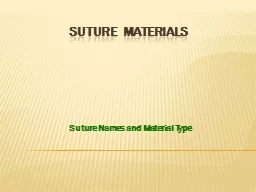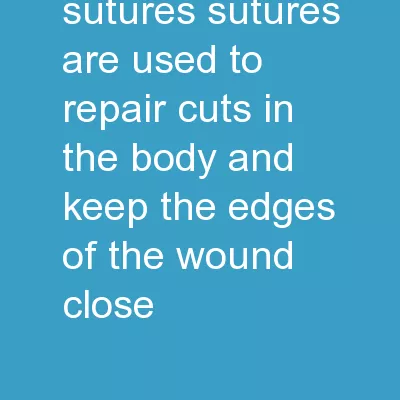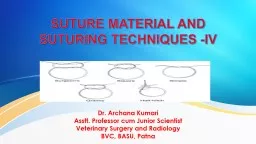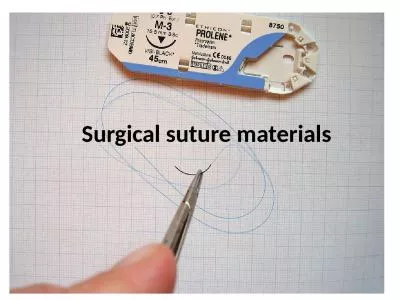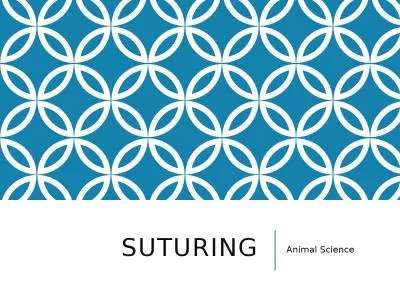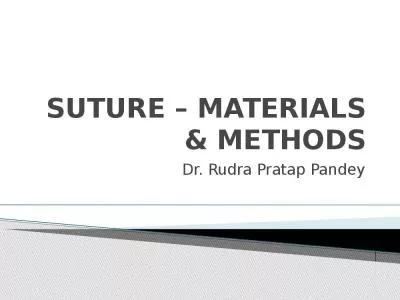PPT-Suturing Dr. Shoshana Weiner DNP, FNP-BC Types of Suture Material
Author : stefany-barnette | Published Date : 2019-11-03
Suturing Dr Shoshana Weiner DNP FNPBC Types of Suture Material Absorbable sutures such as polyglactin 910 Vicryl polyglycolic acid Dexon and poliglecaprone 25 Monocryl
Presentation Embed Code
Download Presentation
Download Presentation The PPT/PDF document "Suturing Dr. Shoshana Weiner DNP, FNP-BC..." is the property of its rightful owner. Permission is granted to download and print the materials on this website for personal, non-commercial use only, and to display it on your personal computer provided you do not modify the materials and that you retain all copyright notices contained in the materials. By downloading content from our website, you accept the terms of this agreement.
Suturing Dr. Shoshana Weiner DNP, FNP-BC Types of Suture Material: Transcript
Download Rules Of Document
"Suturing Dr. Shoshana Weiner DNP, FNP-BC Types of Suture Material"The content belongs to its owner. You may download and print it for personal use, without modification, and keep all copyright notices. By downloading, you agree to these terms.
Related Documents

